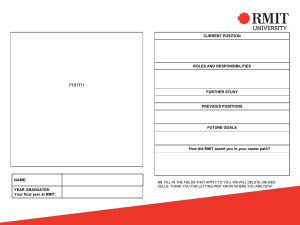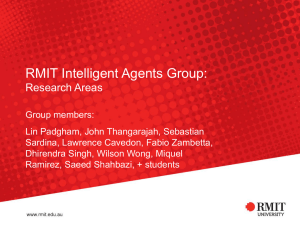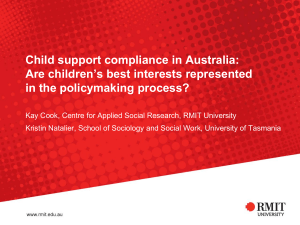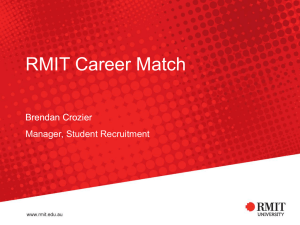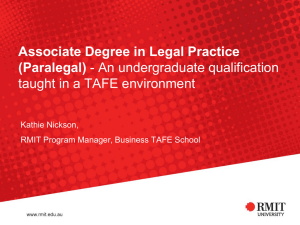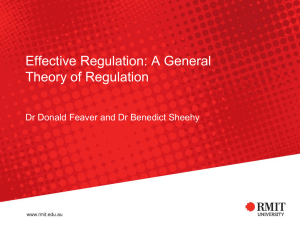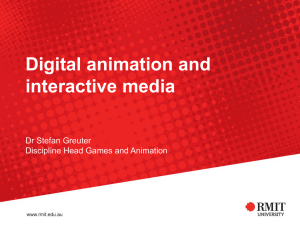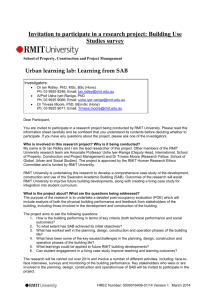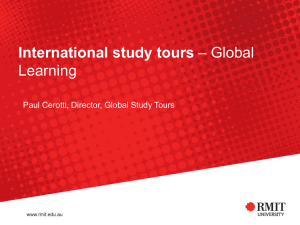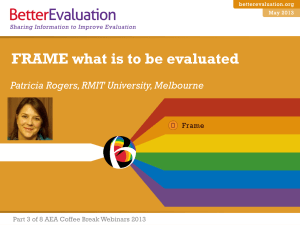“Opportunity Relative to Experience” in Research Settings
advertisement
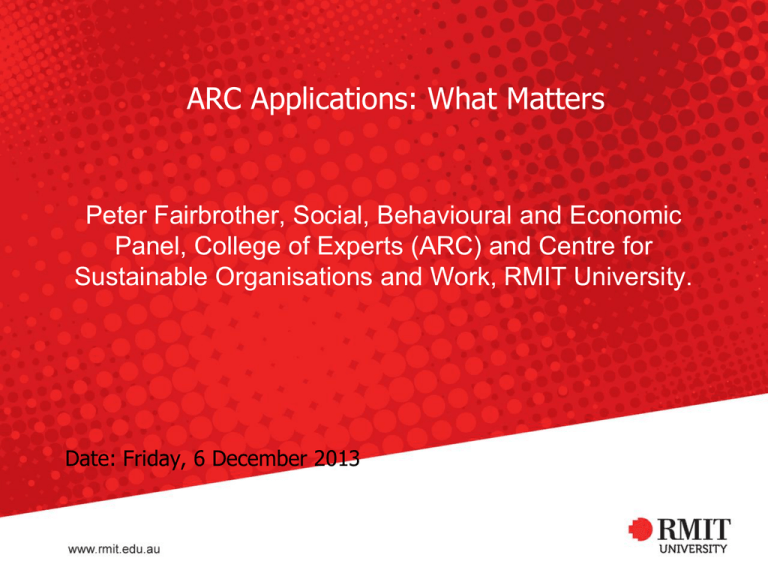
ARC Applications: What Matters Peter Fairbrother, Social, Behavioural and Economic Panel, College of Experts (ARC) and Centre for Sustainable Organisations and Work, RMIT University. Date: Friday, 6 December 2013 Schemes 1. Discovery – DP 2. Early Career Researcher – DECRA 3. Indigenous – IN 4. Linked - LP1 5. Fellowships – different ones RMIT University© 2012/13 Assessment The 2012 SBE panel processed: 1.DP – 693 2.IN – 11 3.DECRA – 257 4.Future Fellows RMIT University© SBE 2013: 1. Average number of readers =3 2. Cross panel assessment more common 3. Never moved out of the A/B range for allocations 4. Increased recognition of ROPE – discussed and even voted on by panel. Overview 1: Participants – roles and activities 1. Panel members: allocate Readers 2. Readers – specialised and detailed 3. Readers – letter assessment 4. Panel members: moderate and rank 5. Panel Meeting: April and August – allocate 6. Panel members: feedback to ARC on procedure and process RMIT University© A Outstanding: Of the highest quality and at the Recommended forefront of research in the field. Approximately 10% Unconditionally of Proposals should receive ratings in this band. B Excellent: High quality research and a strongly competitive Proposal. Approximately 15% of Proposals should receive ratings in this band. Strongly support recommendation of funding Very Good: An interesting, sound and compelling Proposal. Approximately 20% of Proposals should receive rating in this band. Support recommendation of funding with reservation Good: A sound research Proposal, but lacks a compelling element. Approximately 35% of Proposals are likely to fall into this band. Unsupportive of recommending for funding C D E Uncompetitive: The Proposal is uncompetitive and Not recommended has significant weaknesses or more fatal flaws. for funding Approximately 20% of Proposals are likely to fall into this band. RMIT University© Discovery/DECRA/IN Projects Selection Criteria DP DECRA IN a. Investigator(s) 40% a. 35% a. 35% b. Project Quality and Innovation 25% b. 40% b. 40% c. 10% c. 10% d. 15% d. 15% c. Feasibility and Benefit 20% d. Research Environment 15% RMIT University© Project Introduction Aims and subject Background Significance and innovation, Method (in the tightest and manageable way) Timetable etc. RMIT University© Investigators • DP = 40% • DECRA = 35% • IN = 35% • LP = 20% • Partners: Linkage RMIT University© Feasibility and Benefit DP = 20% , DECRA = 10% , IN = 10% Feasibility • Plan of work • Budget – value • Networks Benefit • Outcomes • Intellectual gain • Policy relevance/National priorities RMIT University© Research Environment DP and IN = 15%, DECRA = 10%, IN = 10% • Centre/School: intellectual activity/support • Faculty: research focus/support • University – mission and objectives • Make a case that will be read • Have others read. RMIT University© Partners: Linkage • Involve in approach and method • History • Evidence of actual involvement, consultation • Outcome that is not consultancy RMIT University© Future Fellowships: 2013 • Distinguished and assessed according to level: –FT1 147 applications – award 24 and 4 reserves –FT2 109 applications – award 18 and 2 reserves –FT3 53 applications – award 9 and 4 reserves • ROPE explicitly taken into account in these assessments, by the panel members although not always by readers RMIT University© FF a. Candidate 40% b. Project Quality and Innovation 35% c. Strategic Alignment 15% d. Collaboration Outreach 10% RMIT University© Procedures 1. Divide preparation into parts: a. Investigator b. Research Environment c. Project i. Feasibility and benefit for Discovery ii. Details of links for Linkage 2. Give time to each one.. RMIT University©
